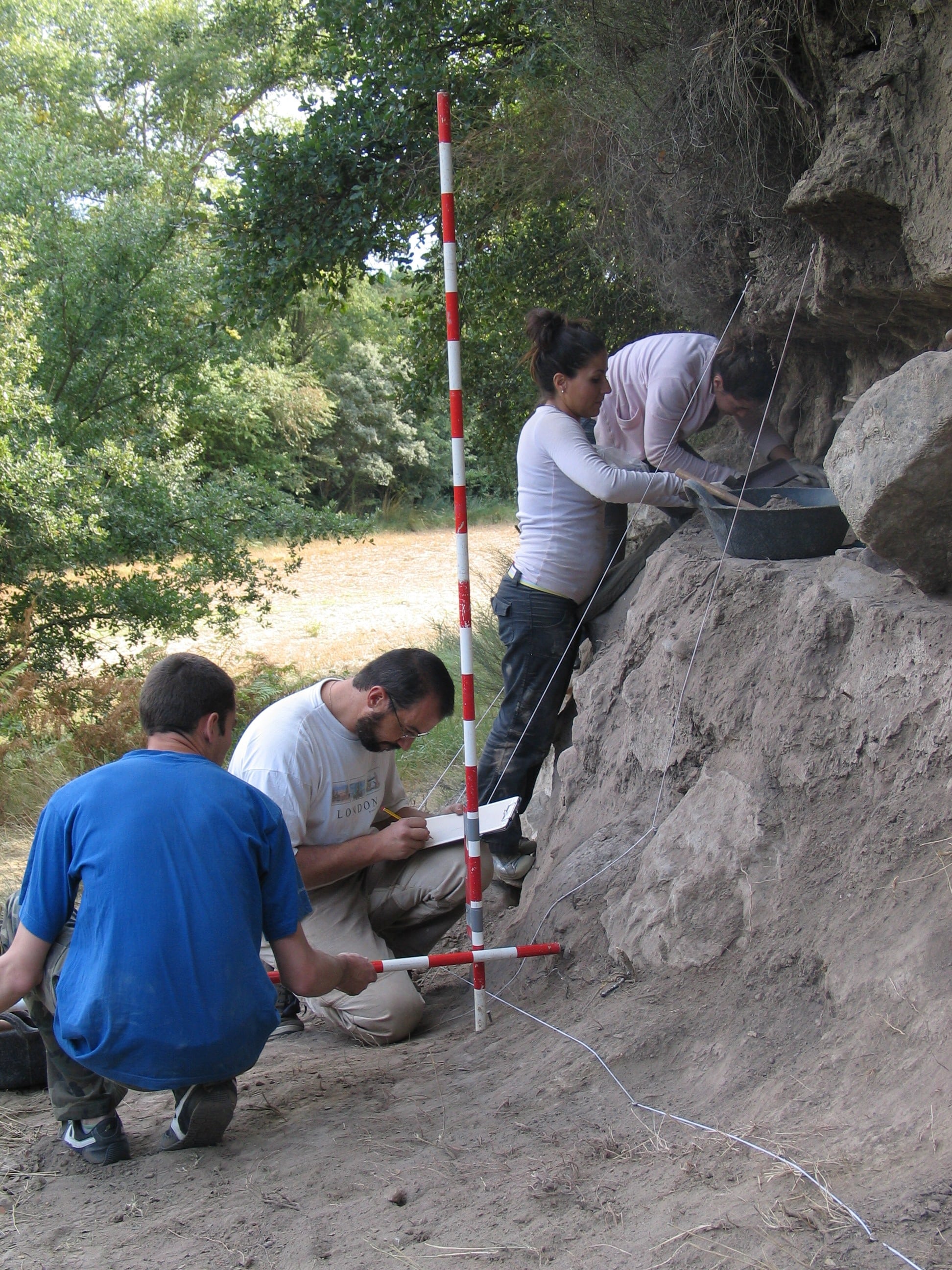Presentation
The main aim of the current reference research group, Primeros Pobladores y Patrimonio Arqueológico del Valle del Ebro (‘First Settlers and Archaeological Heritage of the Ebro Basin’) is the discovery, study, knowledge and dissemination of the archaeological cultural heritage from Prehistory to the end of the Roman world, above all within the region of Aragon.
By applying the methods and techniques characteristic of archaeological research, we are able to study our rich archaeological assets and reconstruct the life forms of the past. This heritage today represents a significant engine of development in areas that are often economically disadvantaged, bringing together natural attractions and historical and archaeological remains. This favours their inclusion in development programmes based on cultural tourism.
The work team is divided between the Institute of Environmental Sciences (IUCA) and the Institute of Heritage and Humanities (IPH), and is composed of effective researchers and collaborating members (belonging to other research organizations and/or universities), all active specialists in different fields of archaeological research, allowing us to advance knowledge from a team and multidisciplinary approach.
Members affiliated with IUCA carry out research based on fieldwork in the Ebro Valley, ranging from the earliest Prehistory to the Iberian period, which, supported by geoarchaeological studies and paleoenvironmental reconstruction (Peña-Monné and Alcolea), focus especially on periods of change: in the Paleolithic transition between Neanderthals and Cromagnons and in the transition from the predatory economy of Mesolithic hunter-gatherers to the agricultural and livestock activities of the first Neolithic communities (Mazo, Montes, Alcolea, López-Tascón, Shveygert); in the increasing complexity of these societies and in the associated post-Paleolithic rock art (Picazo, Ruiz, Serrano), also investigating population movements (Bretos) or the characterization of pre-Roman indigenous populations (Maestro).
Lines of investigation
- Ancient prehistory.- focusing specifically on the Neanderthal population, the final gatherers and the first agricultural and livestock societies, and the study of cave art.
- Recent prehistory.- with special emphasis on the study and cataloguing of sepulchral caves, the sites of the Early and Middle Bronze Age, and the origin and configuration of the societies of the Late Bronze Age and the Early Iron Age.
- Pre-Roman and Roman archaeology.- with special interest in the transition from indigenous societies to the Roman world in urbanism, society and the material culture of the Roman era, as well as in subaquatic archaeology.
- Palaeoenvironmental reconstructions of Pleistocene and Holocene contexts on the basis of geoarchaeological and paleobotanical records, applied to all the above chrono-cultural realms.
- Cross-cutting specialities applicable to various epochs, developed in particular by the new researchers in training: studies of physical anthropology, of archaeobotany, of ceramic technology, of archaeozoology, of pigments (analytical), of the geometric documentation of heritage items, of museology and the highlighting of the archaeological heritage.
Projects undertaken
- PID2020-116598GB-I00: GAPS AND DATES. CULTURAL DYNAMICS IN THE PREHISTORY OF THE EBRO BASIN. Funding Entity: STATE RESEARCH AGENCY
- PID2022-140671NB-I00: Funerary Records and Paleotropology in the Recent Prehistory of the Middle Ebro Valley
- IER Ayuda: REVISITING PEÑA MIEL (NIEVA DE CAMEROS, LA RIOJA). ARCHAEOLOGICAL INTERVENTION
- ERC-2022-StG-101075451: SPEGEOCHERT. SPECTROSCOPY AND GEOCHEMISTRY OF CHERT. RECONSTRUCTING HUMAN MOBILITY IN THE PYRENEES FROM THE FIRST MODERN HUMANS TO THE LAST PLEISTOCENE HUNTER-GATHERERS
- ERC-2020-COG-101001889: REVIVE. TRACING HOMININ OCCUPATIONS OF AND MIGRATIONS THROUGH THE LEVANT: REVIVING PALEOLITHIC RESEARCH IN LEBANON
- PID2020-117713RB-I00: WIMOSA. WIRELESS MONITORING SYSTEM FOR HERITAGE SAFEGUARDING
- SPIP2022-02852: PASTORA. MILLENNIAL DYNAMICS OF PASTURES AND LIVESTOCK FARMING IN THE ORDESA AND MONTE PERDIDO NP: A TRANSDISCIPLINARY APPROACH
- PICT 2019-0193: HUMAN OCCUPATIONS, ENVIRONMENTAL DEGRADATION AND GEOARCHAEOLOGICAL MODELS IN ARID AND SEMI-ARID LANDS OF NORTHWEST ARGENTINA
Infrastructure
Laboratory of Prehistory and Archaeology:
- Leica (100-500x) incident/transmitted light microscope
- Reference collection of prehistoric lithic industry
- Reference collection of pre- and protohistoric and Roman ceramics
- Reference collection of wild and domestic fauna (Pleistocene-Holocene)
- Comparative collection of fossil human crania
- ‘Dirty’ work area (for washing material) and ‘clean’ work area (inventory and classification)
- Ultrasonic box
Flotation machine (washing and separation of sediments for the recovery of seeds, charcoals, microfauna…).
Excavation material (topographic apparatus, tools)
Technological Offer/Services
Archaeological excavations and prospections (prehistory, protohistory, classical archaeology)
Evaluations and cataloguing of heritage
Specialized studies:
- Prehistoric lithic and bone typology
- Functional analysis of lithic tools
- Taxonomy and taphonomy of wild and domestic faunas
- Physical anthropology
- Paleobotanical Analysis
- Studies of prehistoric and Roman ceramics
- Numismatics and epigraphy
- Drawing of materials and archaeological structures
Noticias del Grupo
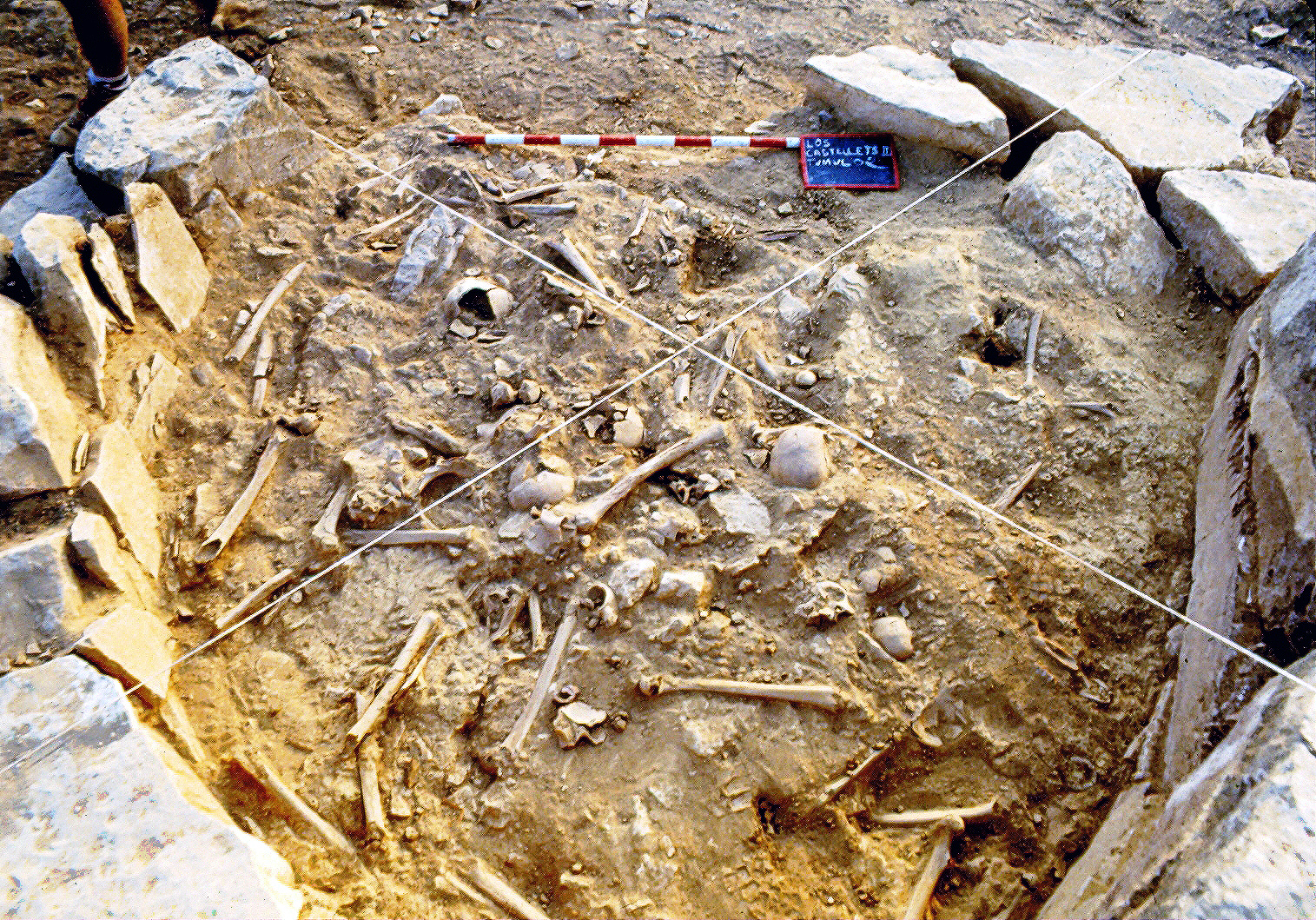
“Who were the families 3,000 years ago? Ancient DNA offers answers on kinship, rituals, and migrations during the Late Bronze Age at Los Castellets (Mequinenza)
(Zaragoza, Monday, September 1, 2025). The necropolis of Los Castellets II, in Mequinenza, a key site of the Late Bronze Age in the northeastern Iberian Peninsula, continues to provide valuable information about the communities of the time and their funerary practices. A study recently published in Communications Biology, led by the University of Zaragoza, offers […].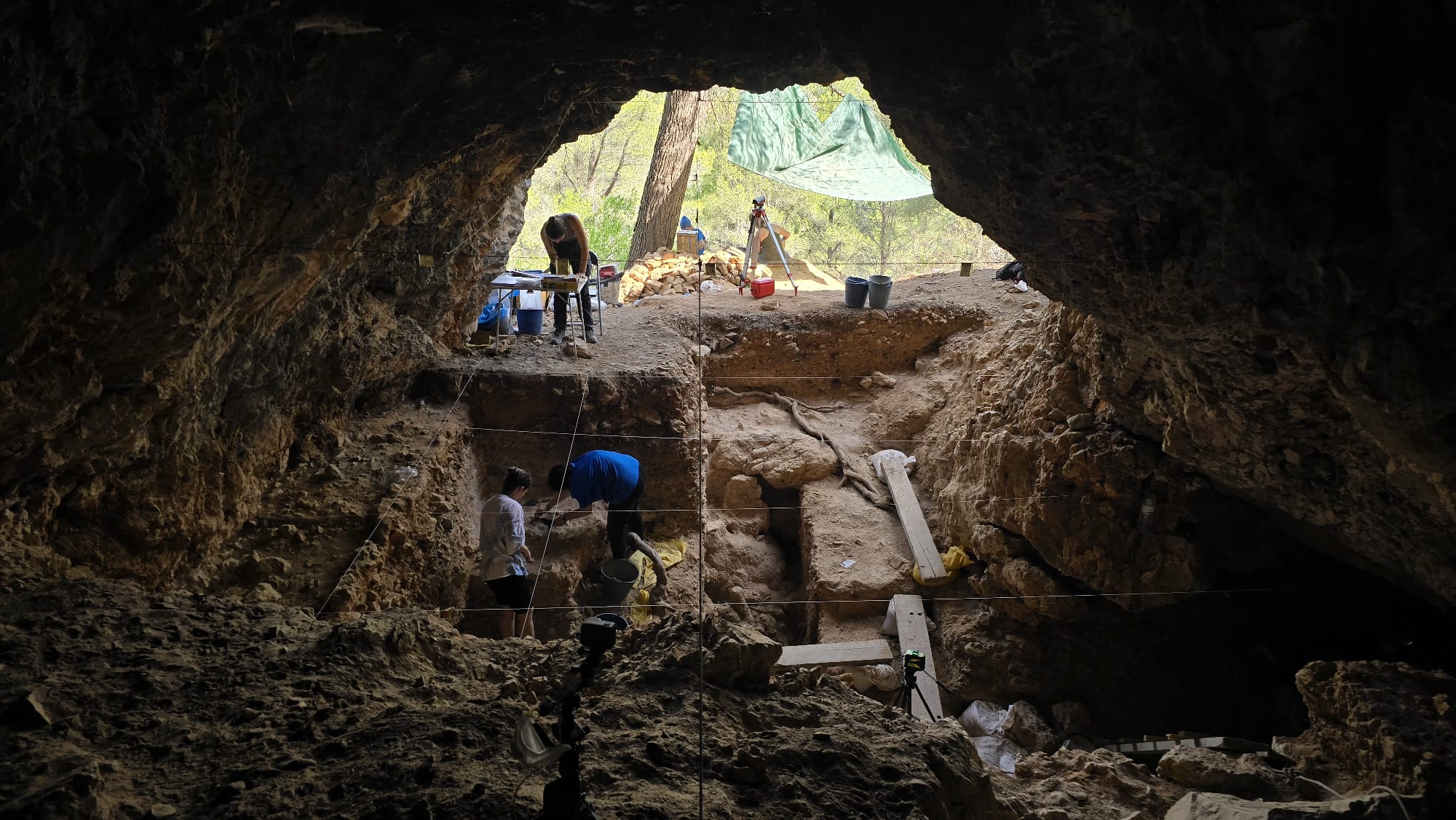
The 15th excavation campaign at the AGP5 cave in Aguilón (Zaragoza) begins, aiming to study the most intense Neanderthal occupation documented at the site to date
This week marks the start of the fifteenth archaeological excavation campaign at the Mousterian site of the AGP5 cave (Aguilón, Zaragoza), which will run until July 31. Discovered in 2010, this site has since yielded evidence of Neanderthal occupations during the Middle Paleolithic, including the recovery of more than 10,000 faunal remains (belonging to animals) […].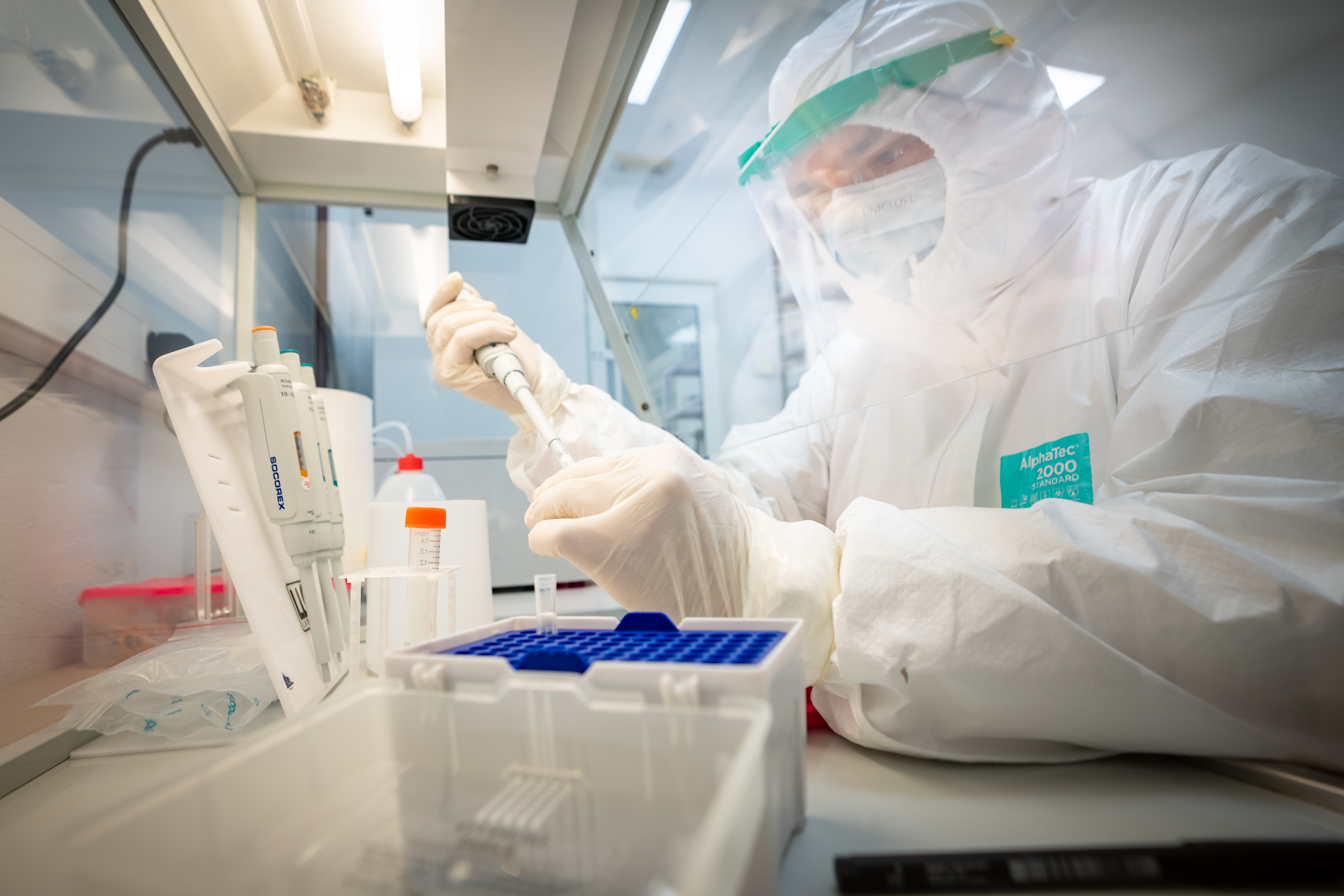
The second edition of the “Stories of the Earth” series concludes with over 1,300 attendees in on-site and online formats.
(Zaragoza. Friday, 27 June 2025.) The Instituto Universitario de Investigación en Ciencias Ambientales de Aragón (IUCA) concluded the second edition of the “Stories of the Earth” lecture series on 18 June. This science‑outreach initiative traveled across all three provinces of Aragon during the 2024–2025 academic year, aiming to bring the institute’s research closer to the […].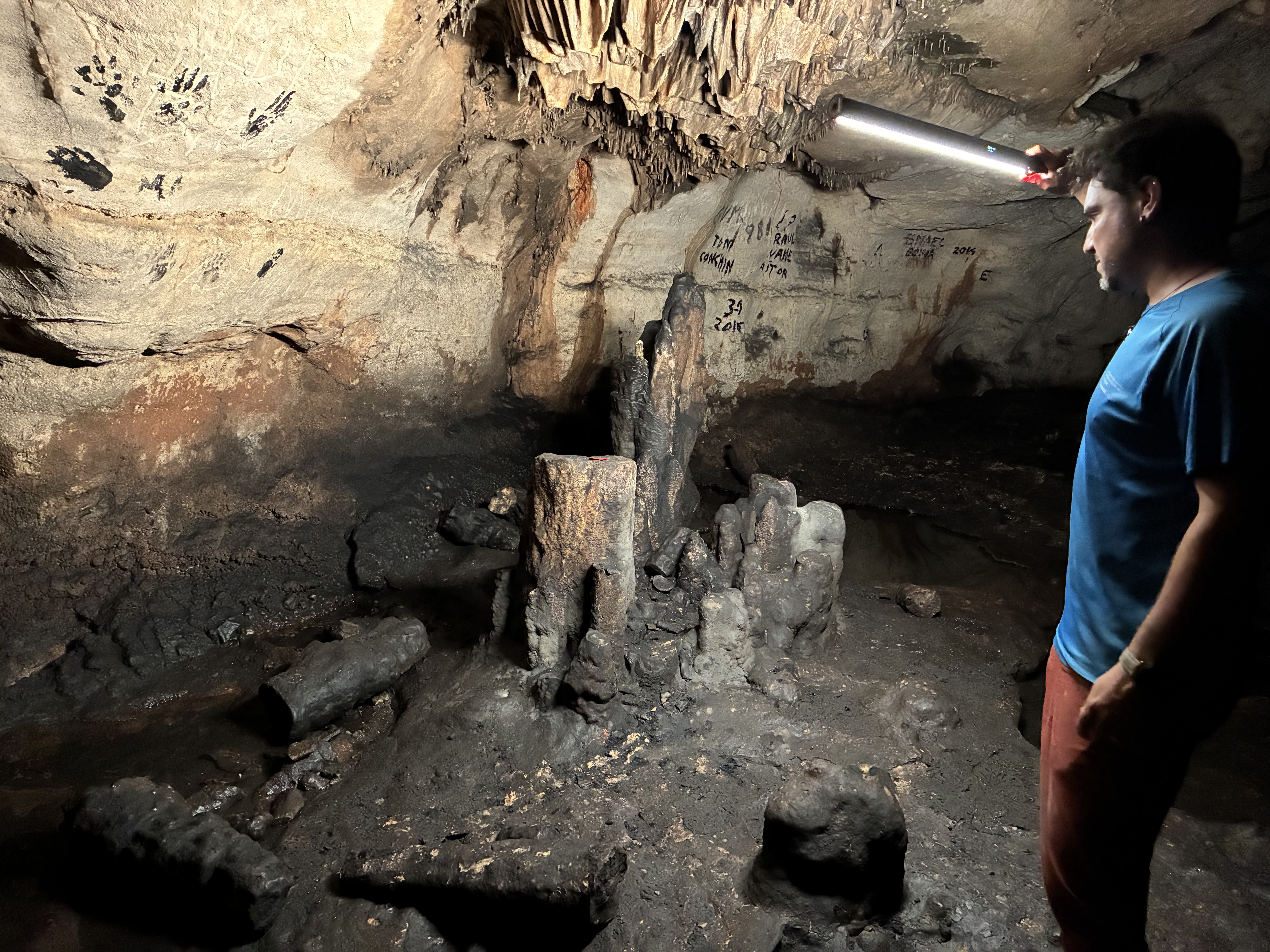
Cova Dones Confirms Its Global Significance with the Discovery of Over One Hundred Prehistoric Speleofacts
Zaragoza/Alicante, Monday, June 2, 2025. Ongoing archaeological work at Cova Dones (also known as Cueva Donas), located in Millares (Valencia), has revealed over one hundred speleofacts—stalagmitic formations intentionally modified by human activity. This finding, led by the DONARQ project team composed of archaeologists from the Universities of Zaragoza and Alicante, highlights the intentional transformation of […].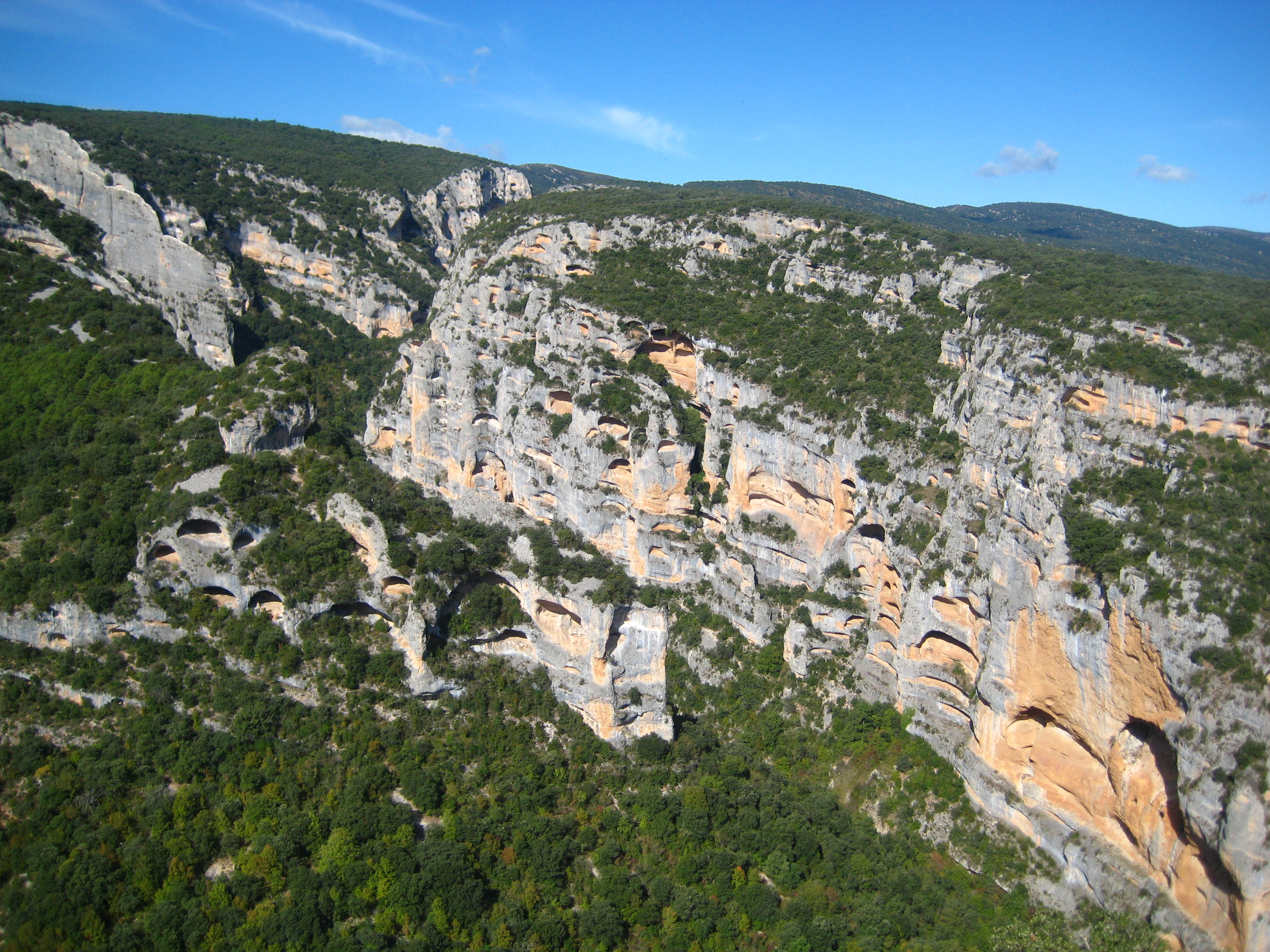
Unizar Researcher Lourdes Montes Highlights the “Exceptional Archaeological Heritage” of the Río Vero, in Colungo
(Zaragoza/Huesca, May 15, 2025). The Rock Art Center of Colungo (Huesca) will host, on Saturday, May 17 at 1:30 p.m., the lecture “The Exceptional Archaeological Record of the Vero,” delivered by María Lourdes Montes Ramírez, Professor of Prehistory at the Huesca Campus of the University of Zaragoza, and researcher with the First Settlers and Archaeological Heritage […].
The “Stories of the Earth” Lecture Series Visits the Río Vero Cultural Park with a Talk on Its Exceptional Archaeological Heritage
(Zaragoza/Huesca, Wednesday, May 14, 2025). The Rock Art Center of Colungo (Huesca) will host the lecture “The Exceptional Archaeological Record of the Vero”on Saturday, May 17, at 1:30 PM, delivered by María Lourdes Montes Ramírez, Associate Professor of Prehistory at the University of Zaragoza and researcher with the Early Settlers and Archaeological Heritage of the Ebro […].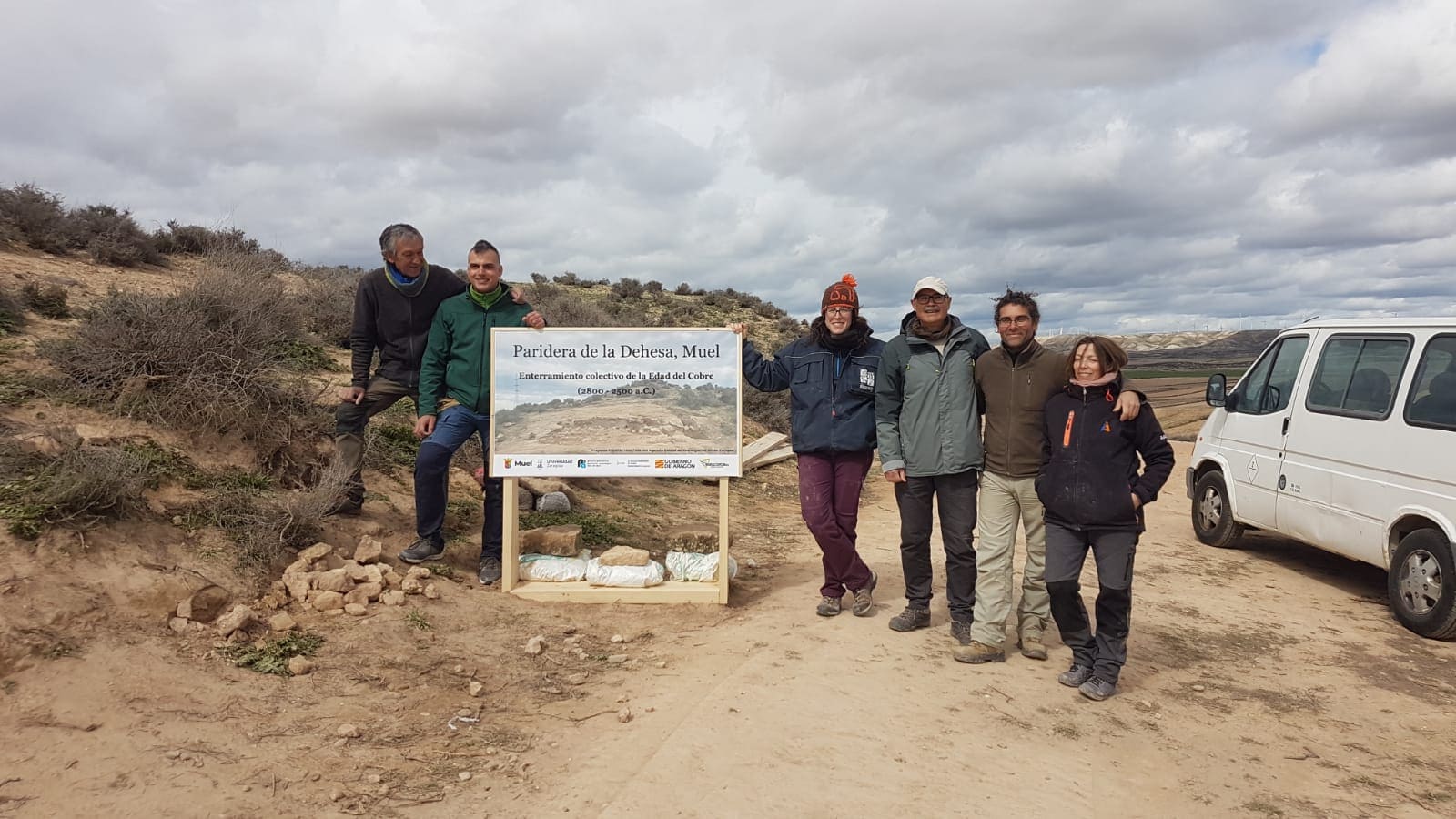
Second Archaeological Excavation Campaign at the Paridera de la Dehesa
(Zaragoza, Tuesday, April 1, 2025). Between March 10 and 29, the second archaeological excavation campaign was carried out at the Paridera de la Dehesa site, located in the municipality of Muel (Zaragoza). The site consists of a collective tomb dated between 2800 and 2500 BCE, corresponding to the Chalcolithic period, and its study is providing […].
The Mousterian site of AGP5 cave (Aguilón, Zaragoza) continues to reveal evidence about the final period of Neanderthal presence in the Iberian Range
(Zaragoza, Wednesday, September 4, 2024). Archaeological work began over a decade ago at the AGP5 cave, located in the municipality of Aguilón, in the province of Zaragoza. The first archaeological remains were discovered in 2010, and since then, successive excavation campaigns have focused on the outermost area of the cave. Up until this summer’s campaign, […].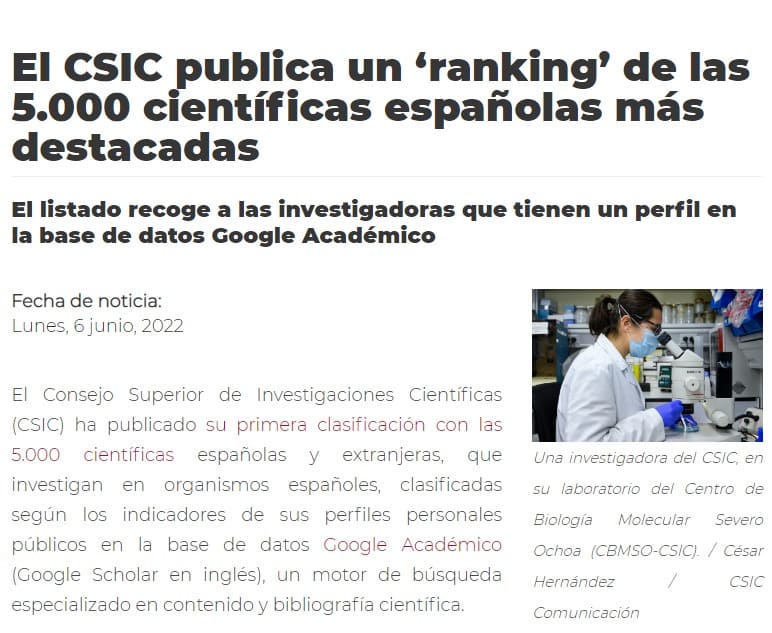
One hundred Unizar researchers, among the 5,000 most cited and best positioned Spanish scientists in Google Scholar
(Zaragoza. Friday, June 17, 2022). More than a hundred researchers from the University of Zaragoza are part of the 5,000 most cited and best positioned Spanish scientists, according to the ranking drawn up for the first time by the Higher Council for Scientific Research (CSIC) in order to increase visibility of the role of Spanish […].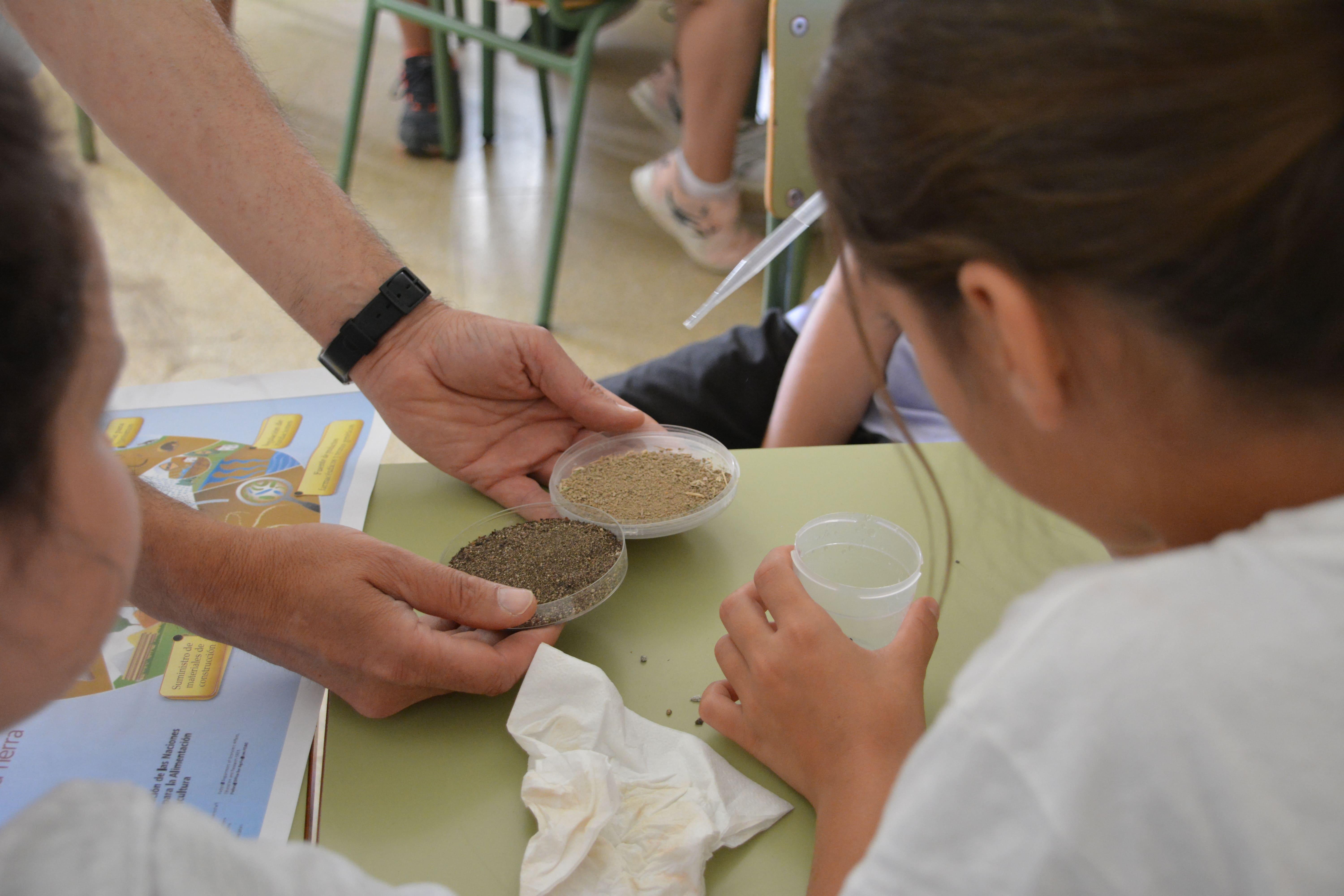
World Environment Day 2022
(Zaragoza. Wednesday, June 8, 2022). The province of Huesca has hosted this year the activities organized by the Environmental Science Research Institute of Aragon (IUCA) on the occasion of World Environment Day, which was commemorated last Sunday, June 5. The proposed activities were carried out last Tuesday, June 7, in the morning and afternoon. During […].
The Environmental Sciences Research Institute of Aragon (IUCA) celebrates World Environment Day with activities in Huesca
(Zaragoza. Friday, June 3, 2022). The province of Huesca will this year host the activities organized by the Research Institute in Environmental Sciences of Aragon (IUCA), of the University of Zaragoza, next Tuesday, June 7. On the occasion of World Environment Day, which is commemorated on June 5, these proposals are organized for children and […].
History students from the University of Zaragoza participate for the first time in the archaeological excavations of the Badanj site, in southern Bosnia-Herzegovina
(Zaragoza, April 20, 2022). The Badanj site, located in southern Bosnia-Herzegovina, is one of the most important in Europe in terms of material wealth for the Recent Epigravettian period (c. 18,000-12,000 years before present). The latest campaign of archaeological excavations at this site has had the participation of students of the Degree in History from […].
| DGA GROUP REFERENCE: | H14_23R |
| YEAR OF CREATION: | 2003 |
| NUMBER OF THESES SUPERVISED (2023): | 1 |
| NUMBER OF PUBLICATIONS (2023): | 11 |
Chief investigator:
José María Rodanes Vicente (Instituto de Patrimonio y Humanidades IPH-Unizar)
Co-chief investigator:
Rafael A. Domingo (Instituto de Patrimonio y Humanidades IPH-Unizar)
Contact IUCA:
Mª Lourdes Montes Ramírez




